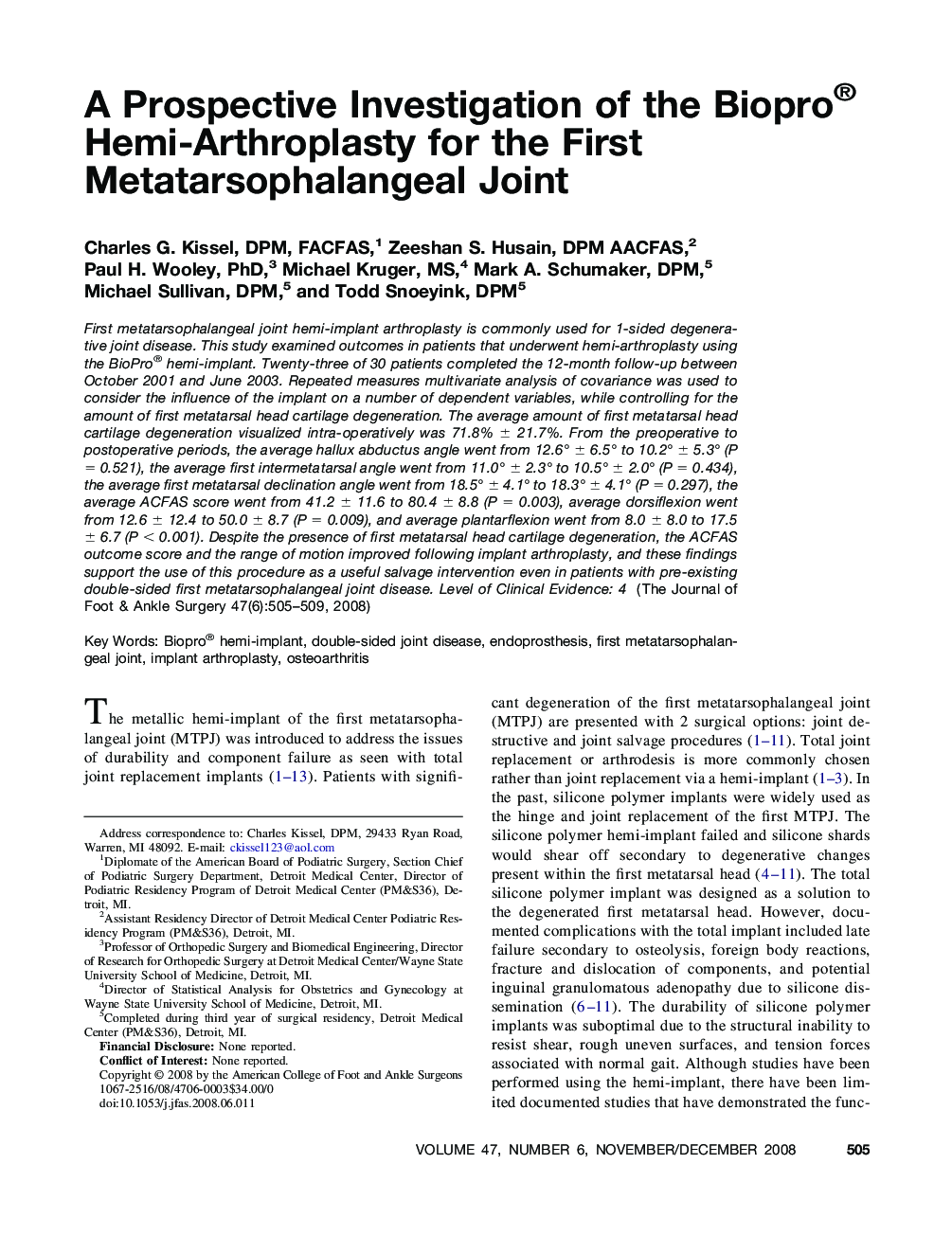| Article ID | Journal | Published Year | Pages | File Type |
|---|---|---|---|---|
| 2713602 | The Journal of Foot and Ankle Surgery | 2008 | 5 Pages |
First metatarsophalangeal joint hemi-implant arthroplasty is commonly used for 1-sided degenerative joint disease. This study examined outcomes in patients that underwent hemi-arthroplasty using the BioPro® hemi-implant. Twenty-three of 30 patients completed the 12-month follow-up between October 2001 and June 2003. Repeated measures multivariate analysis of covariance was used to consider the influence of the implant on a number of dependent variables, while controlling for the amount of first metatarsal head cartilage degeneration. The average amount of first metatarsal head cartilage degeneration visualized intra-operatively was 71.8% ± 21.7%. From the preoperative to postoperative periods, the average hallux abductus angle went from 12.6° ± 6.5° to 10.2° ± 5.3° (P = 0.521), the average first intermetatarsal angle went from 11.0° ± 2.3° to 10.5° ± 2.0° (P = 0.434), the average first metatarsal declination angle went from 18.5° ± 4.1° to 18.3° ± 4.1° (P = 0.297), the average ACFAS score went from 41.2 ± 11.6 to 80.4 ± 8.8 (P = 0.003), average dorsiflexion went from 12.6 ± 12.4 to 50.0 ± 8.7 (P = 0.009), and average plantarflexion went from 8.0 ± 8.0 to 17.5 ± 6.7 (P < 0.001). Despite the presence of first metatarsal head cartilage degeneration, the ACFAS outcome score and the range of motion improved following implant arthroplasty, and these findings support the use of this procedure as a useful salvage intervention even in patients with pre-existing double-sided first metatarsophalangeal joint disease. Level of Clinical Evidence: 4
